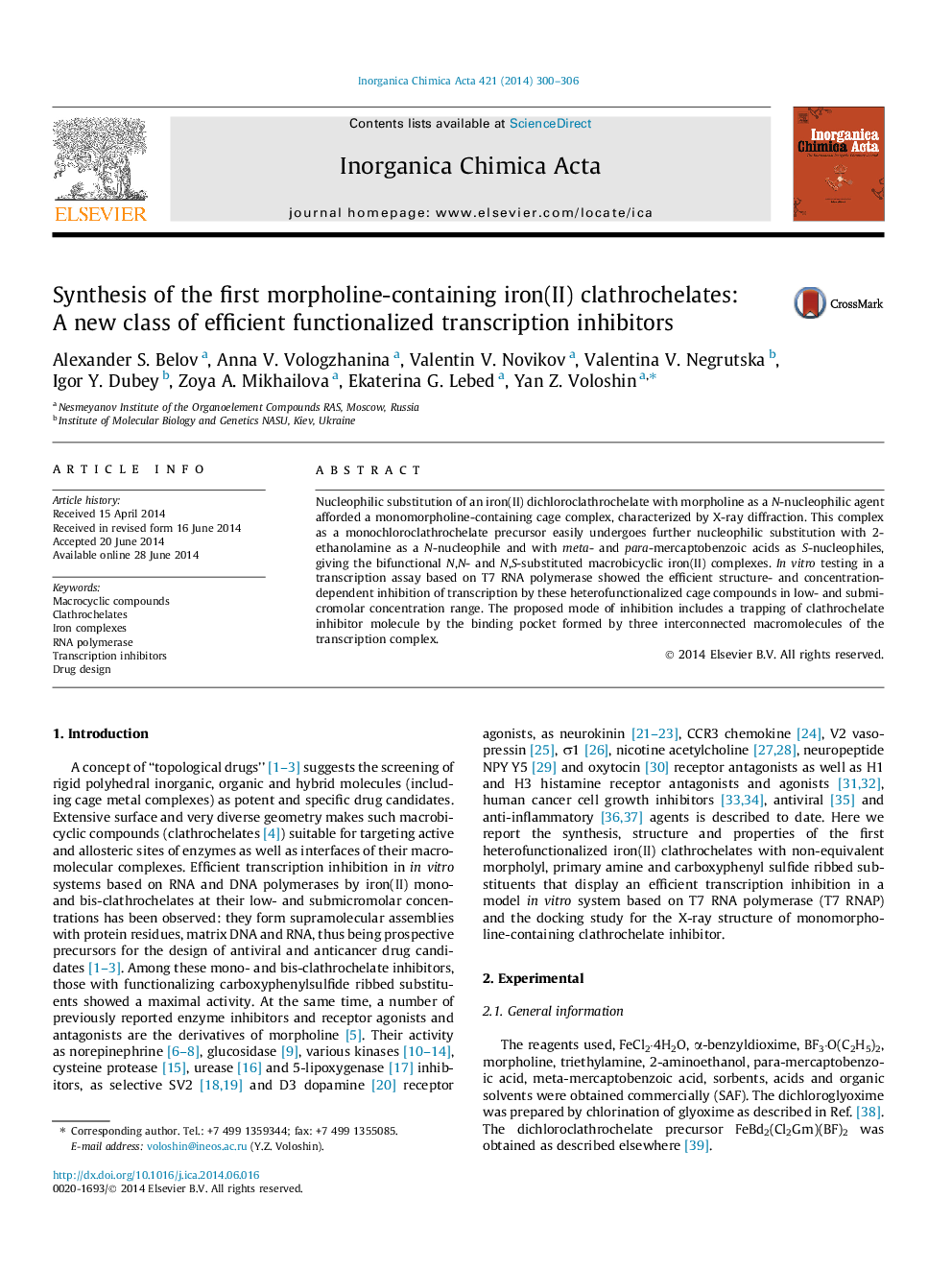| Article ID | Journal | Published Year | Pages | File Type |
|---|---|---|---|---|
| 1308120 | Inorganica Chimica Acta | 2014 | 7 Pages |
•N,N- and N,S-substituted morpholine-containing iron(II) clathrochelates were obtained.•T7 RNA polymerase is inhibited by iron(II) clathrochelates.•Mercaptobenzoic residue is structural fragment important for the efficient inhibition.
Nucleophilic substitution of an iron(II) dichloroclathrochelate with morpholine as a N-nucleophilic agent afforded a monomorpholine-containing cage complex, characterized by X-ray diffraction. This complex as a monochloroclathrochelate precursor easily undergoes further nucleophilic substitution with 2-ethanolamine as a N-nucleophile and with meta- and para-mercaptobenzoic acids as S-nucleophiles, giving the bifunctional N,N- and N,S-substituted macrobicyclic iron(II) complexes. In vitro testing in a transcription assay based on T7 RNA polymerase showed the efficient structure- and concentration-dependent inhibition of transcription by these heterofunctionalized cage compounds in low- and submicromolar concentration range. The proposed mode of inhibition includes a trapping of clathrochelate inhibitor molecule by the binding pocket formed by three interconnected macromolecules of the transcription complex.
Graphical abstractMorpholine-functionalized iron(II) clathrochelates display an efficient transcription inhibition in a model in vitro system based on T7 RNA polymerase.Figure optionsDownload full-size imageDownload as PowerPoint slide
